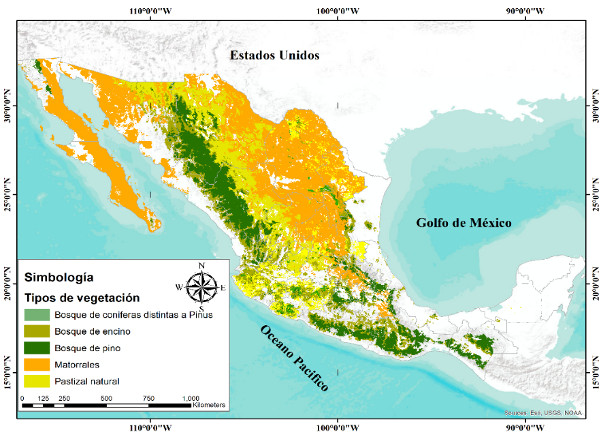Contingency analysis of natural distribution of Mexican pines in risk category
DOI:
https://doi.org/10.28940/terra.v40i0.1043Keywords:
temperate forests, chi-square, conservation, socio-environmental factorsAbstract
Studies on species natural distribution are necessary to determine the effect of social and environmental conditions on spatial distribution. The objectives of this research were to know the natural distribution of pine species considered at risk by Mexican laws and identify the possible association between these categories and socio-environmental factors (marginalization, soil degradation and forest productivity). For this purpose, a database was created on location and socioeconomic characteristics of the pines created from various sources. The independence between the risk categories of the pines and the socio-environmental factors was evaluated by means of a contingency analysis, which considers a chi-square statistics test. Of the 20 listed pine species, a total of 2480 records were obtained. Highly marginalized areas recorded 4.48%, high 26.21%, medium 18.47%, and low 50.85%. Thirteen species are found on degraded soils; 55.79% of the records are in a moderate situation, 37.76% light, 6.22% strong, and 0.21% extreme. Production, areas recorded 65.89% (of the total species), 30.81% in Conservation and 3.31% in restoration. The chi-square statistics test showed that the proportions of pine species in danger of extinction ─and in special protection─ are not the same in the different types of forest zoning, as well as in the different degrees of marginalization and soil degradation.
Downloads
Publication Facts
Reviewer profiles N/A
Author statements
- Academic society
- Terra Latinoamericana
- Publisher
- Mexican Society of Soil Science, C.A.

















